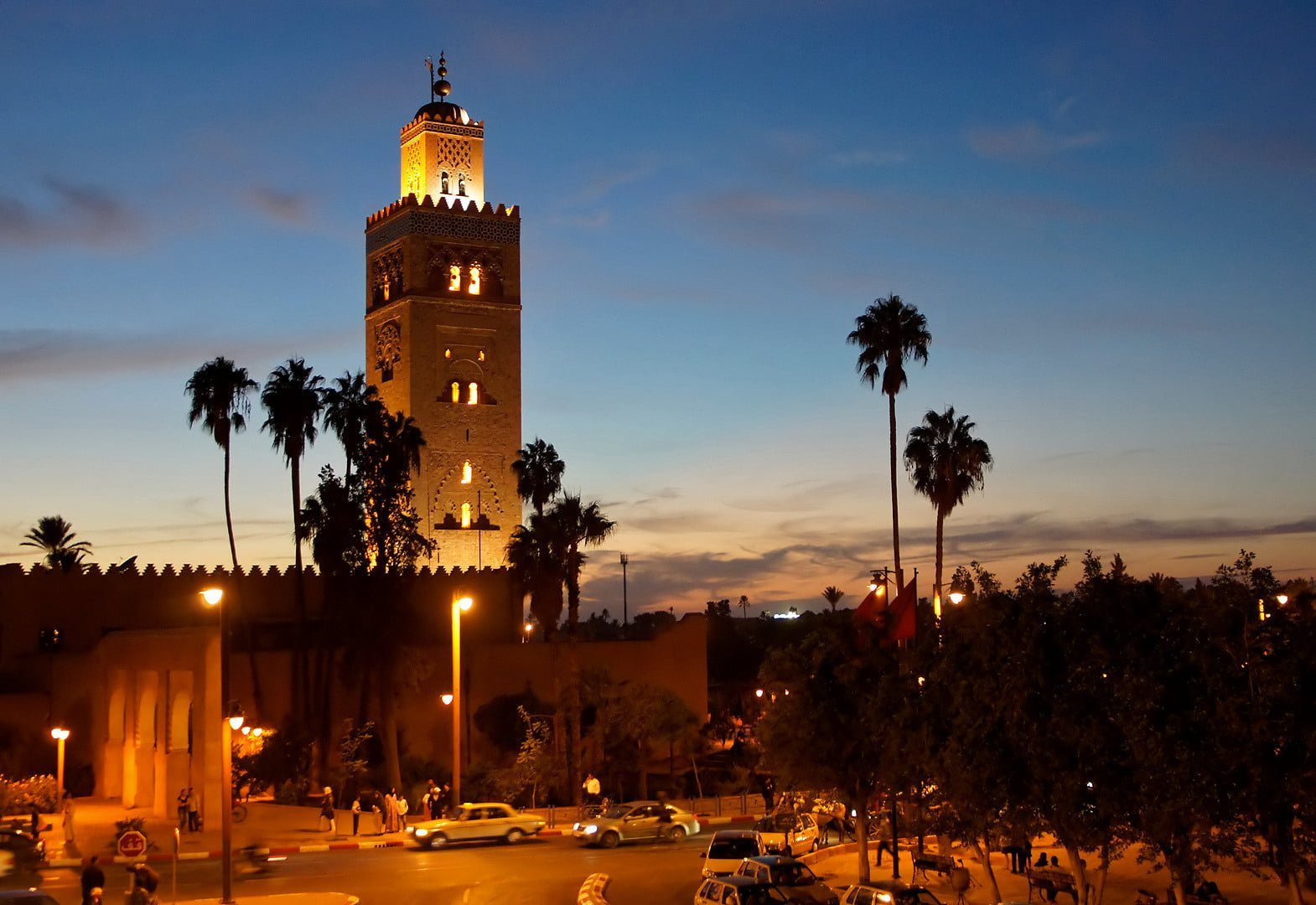Morocco Guided Tours Cities: Marrakech & Fes
Morocco Guided Tours for many cities special Marrakech & Fes. Rabat, Mekness and also Essouira and Taroudant with local expertise guides.
What do you see in Marrakech?
Jemaa el-Fna
What is it? The vast open square at the heart of the medina is one of Marrakech’s biggest attractions and is a Unesco world heritage site. Expect snake charmers, street entertainers and over-enthusiastic henna artists at every turn.
Bahia Palace
What is it? This 150-room palace was home to slave-turned-vizier Abu ‘Bou’ Ahmed, who spared no expense in its gorgeous decoration. The painted, gilded ceilings, polychrome zellige tiling and carved stucco still have the intended effect – which is just ‘wow’
Jardin Majorelle
What is it? Created by the French painter Jacques Majorelle, this botanical garden is home to more types of cacti than you can shake a terrarium at, and has a stunning indigo blue art deco house as its centrepiece.
El Koutobi Mousque
In the southwest corner of the medina, within walking distance of the bustling Jemaa El Fna, lies Marrakech’s most recognizable landmark, Koutoubia Mosque. Featuring intricate tile work, salmon-hued walls, expansive archways and an impressive 253-foot-tall minaret (or tower), this 12th-century Moorish mosque has served as the model for several other notable religious sites, including the Hassan Tower in Rabat, Morocco, and La Giralda in Seville, Morocco Guided Tours. Morocco Guided Tours. Morocco Guided Tours
El Badi Palace
What is it? The epic ruins of Sultan Ahmed el-Mansour’s once-magnificent palace, set within sunken gardens and surrounded by epic ramparts whose decrepit towers boast panoramic views over the medina.
Saadian Tombs
South of the medina, this cemetery houses over 160 tombs containing the remains of Saadian dynasty members, their advisors, and royal spouses. It was initially used in the early 14th century, but its intricate decorations, including cedar ceilings, colorful mosaics, and Carrara marble headstones, were added by Ahmed El Mansour in the 16th century. Unlike many other ornate structures in the region, this site escaped plundering by Sultan Moulay Ismail in the early 18th century, making it one of Marrakech’s few surviving Saadian sites.
Souk Place des Épices
What is it? Moroccan cuisine is famous for its rich, aromatic flavours. Place des Épices is the traditional spice souk where you’ll find merchants selling everything from allspice to ras al hanout (a mix of more than a dozen spices).
What do see in Fes city ?
Al Quaraouiyine Mosque
Al Quaraouiyine, built in 859BCE by Fatima al-Fihri, is believed to be one of the oldest universities in the world. It now operates as a mosque and cannot be entered by non-Muslims. However, its library, renovated in 2016, is open to the public, and you can get a glimpse of the impressive, handmade tilework dating back to the 9th century. You can also get a perfect view of the mosque courtyard from the rooftops of nearby restaurants in the medina.
Chouara Tannery
This is the most iconic place in Fez, and the oldest tannery in the world, where they still operate as they did in medieval times. Here, men make leather in a massive tannery surrounded by houses and shops. The smell of the dyeing process can get rather intense, so take a scarf to cover your nose (or they will give you mint leaves to rub under it). This is a great place to buy your leather souvenirs.
Al-Attarine Madrasa
The Al-Attarine Madrasa, a historic landmark, sits close to Al-Quaraouiyine Mosque and Al-Attarine Souk, known for local spices and more. Built from 1323 to 1325, it mirrors the mosque’s stunning design, featuring green and blue zellij tiles, intricate plaster and cedar wood carvings, indoor classrooms, and a courtyard fountain.
Medersa Bou Inania
Right at the entrance of the old medina lies the former theological college for Muslim intellectuals. Built by Sultan Bou Inan in the 14th century, it has been beautifully restored, featuring incredible mosaics, carved plaster, cedar mashrabiyas (lattice screens) and impressively large doors. The inside is splendid, with a fountain in the courtyard and endless, handcarved walls and zellij(mosaic) tilework. It also has rooms on two floors, where classes used to be taught.
Merenid Tombs
These tombs house the skeletal remains of sultans and other royals of the Merenid dynasty. Although not intact, and most of the decorations and engravings have faded throughout the years, you can still see the authenticity of the architecture. The climb up the hill is definitely worth it for the view over the 1,200-year-old medina, especially at sunset. Just don’t stay too long after nightfall, as the descent can get difficult in the dark.

